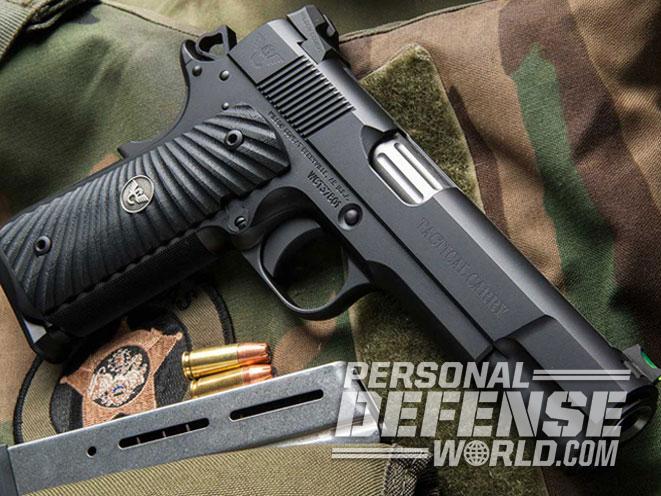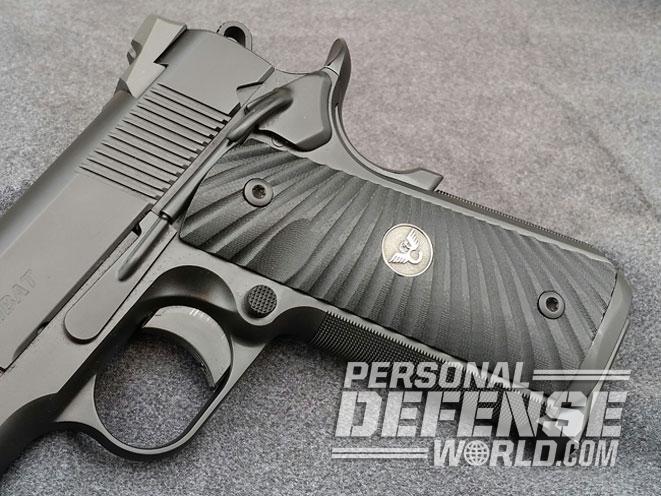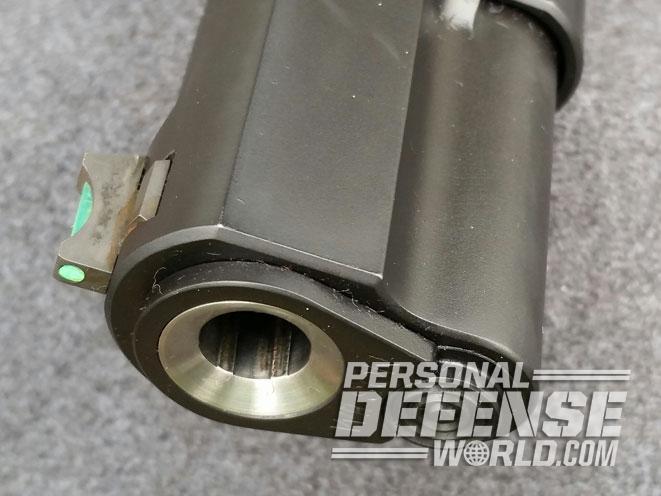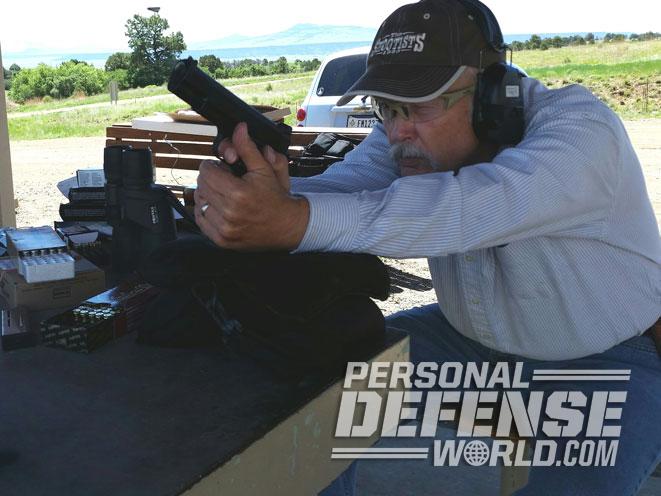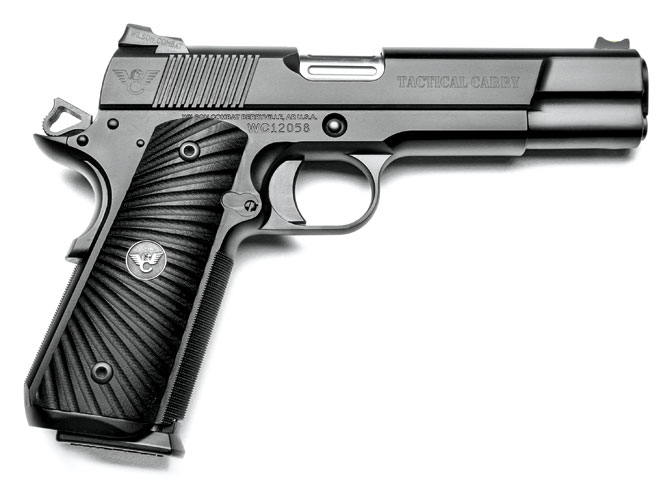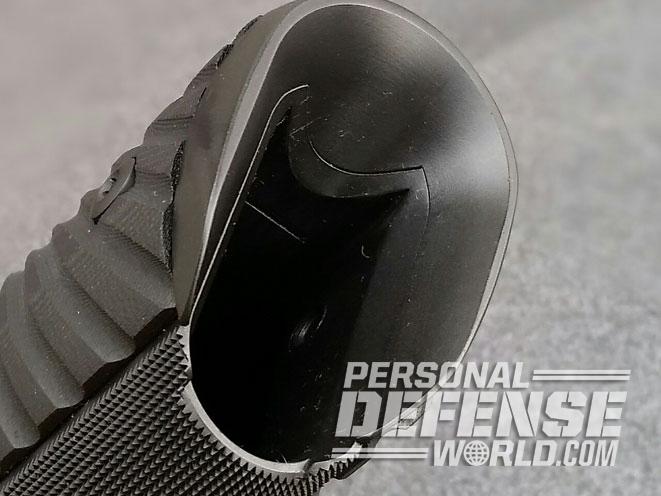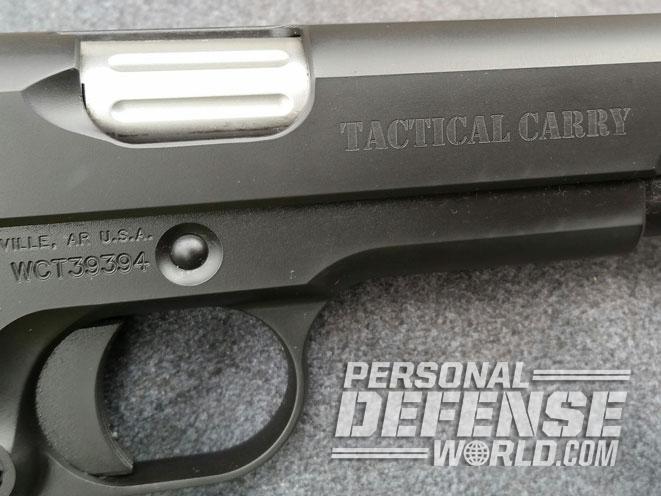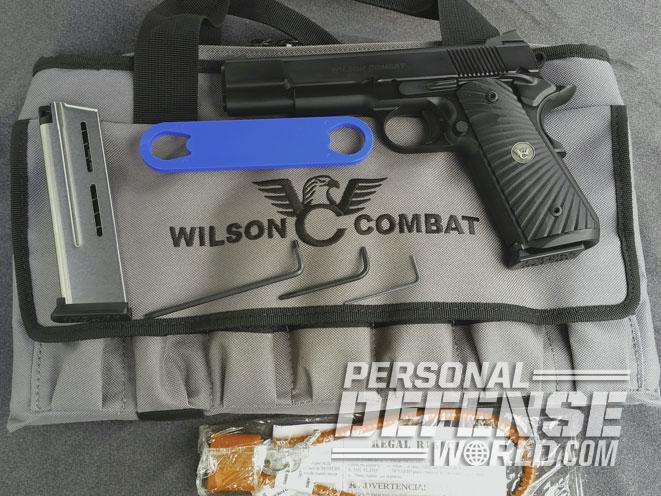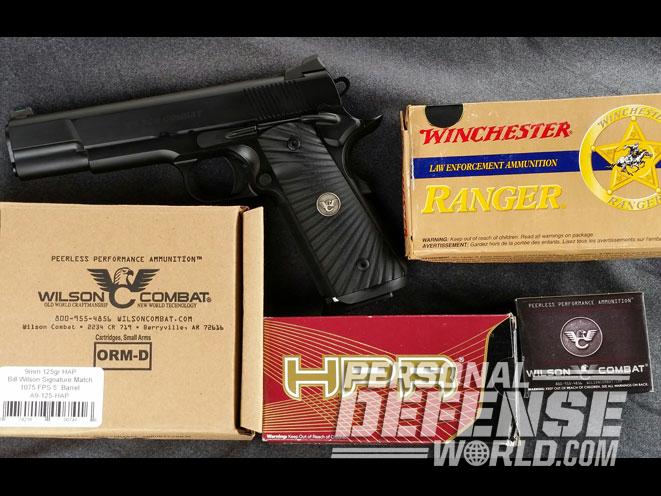In some 45 years of shooting handguns, I’ve gained more than a little familiarity with the 1911 pistol. In my youth, I owned a Colt Series 70 in .45 ACP, and later as a commissioned officer in the U.S. Army Reserve I was trained on, carried and competed with the 1911A1 pistol. I’ve packed a 1911 as an off-duty gun and as a gun writer I’ve evaluated a number of 1911 pistols. So I feel it is safe to say that my opinion, based on experience, is worth something.
That said, I believe the 1911 pistols made by Wilson Combat are top-shelf products. Granted, you will pay more for one of them, but you get what you pay for, so save up if need be! One of the newest 1911s in the Wilson Combat “stable” is the Tactical Carry. It’s ideal as an everyday-carry pistol, featuring a durable, full-sized steel frame mated with a Bullet Proof round butt and a one-piece mag well that enhances both fast reloading and concealment.
Custom Grade
Advertisement — Continue Reading Below

The Tactical Carry arrived in a gray, zippered nylon case with the Wilson logo. The central pouch is for the pistol; on one side there’s two pouches for accessories and on the opposite side is a large flap covering pouches for up to seven magazines. There was also a barrel bushing wrench, Torx wrenches for grip removal and sight adjustment, plus a safety padlock and owner’s manual. Also included are two Elite Tactical magazines.
RELATED STORY: Bill Wilson of Wilson Combat – 9mm vs. .45 ACP 1911s
The Tactical Carry 1911 exudes quality. During my initial inspection, parts fitting appeared superlative and the matte blue Armor-Tuff finish was all business; attractive yet non-reflective with no machine marks or any kind of exterior blemish. This is an all-carbon-steel gun except for the match-grade, 5-inch, stainless steel barrel, which has a flush-cut reverse crown. The top of the slide between the sights is finely serrated to eliminate glare. Dovetailed into the front of the slide is a fiber-optic (green) front sight and dovetailed on the rear is a Battlesight with a deep U-shaped notch, also serrated at the rear and adjustable for windage.
Advertisement — Continue Reading Below
The sides of the Tactical Carry’s slide are deeply serrated with 12 ball endmill cuts, allowing for a good grasp when cycling the slide. The ejection port is flared and the portion of the barrel exposed in the port is fluted. The left side of the slide is laser etched “Wilson Combat” and the right side near the rear has the WC logo. Ahead of the ejection port are the words “Tactical Carry.” The portion of the slide above the end of the frame’s dustcover has a carry cut, while the rear of the slide has 40-line-per-inch serrations and the slide bottom is heavily machine chamfered.

Moving down, the Tactical Carry is fitted with Wilson’s Bullet Proof concealment hammer (skeletonized) and beavertail grip safety. The medium-length trigger is factory set for a 3.5- to 3.75-pound pull weight and has about 0.15 inches of take-up before a crisp break with barely perceptible overtravel. The slide stop post is countersunk so it doesn’t protrude from the frame and there’s also a Bullet Proof thumb safety.
The Bullet Proof magazine catch is slightly extended and magazines full or empty drop freely. Fluted and textured G10 Starburst grip panels, black in color, are attached with Torx-head screws and provide a secure hold. Adding to this, the frontstrap has 30-lpi checkering, as does the flat mainspring housing, which incorporates the magazine well. All of these performance features and cosmetic options are some of the most popular offered by Wilson Combat for its 1911 lineup.
Advertisement — Continue Reading Below
Reliable Mags
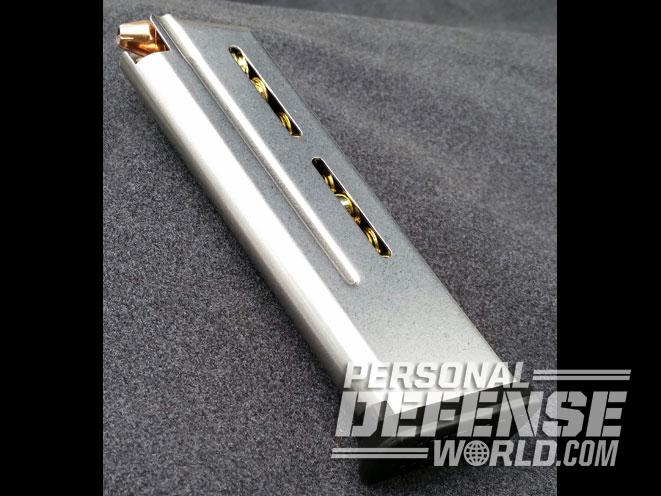
Unlike a revolver, the heart of a semi-automatic pistol is the magazine. Poorly made, defective or damaged magazines can lead to malfunctions, and your autoloader is only as good as its magazine. The Elite Tactical mags for the 9mm Tactical Carry have a 10-cartridge capacity.
Advertisement — Continue Reading Below
RELATED STORY: 5 Wilson Combat 1911 Defenders
With over 30 years of experience with 1911 magazines, Wilson started with a clean slate when designing these magazines. The magazine tube is crafted from an aircraft-grade stainless steel tube using a custom-designed welding process. A multi-step tumbling and finishing process provides smooth follower operation and insertion of the magazine into the pistol. The observation slots are strategically placed to ensure structural integrity. Fiber-filled, self-lubricating nylon is used for the follower to allow smooth feeding and positive slide lock after the last round is fired.
Each magazine’s extended skirt ensures stability in operation and minimizes creep from the tube when the magazine is empty. A nylon insert at the rear of the magazine adjusts for the shorter 9mm cartridge. Magazine springs are space-age stainless steel spring wire and the nylon baseplates are easily removed for magazine cleaning. All this combines to help eliminate feed lip cracking, tube spread and general fatigue, plus they’re corrosion resistant and have a no-risk service policy; if a magazine breaks in normal use, it’ll be replaced.
Advertisement — Continue Reading Below
Carry Essentials
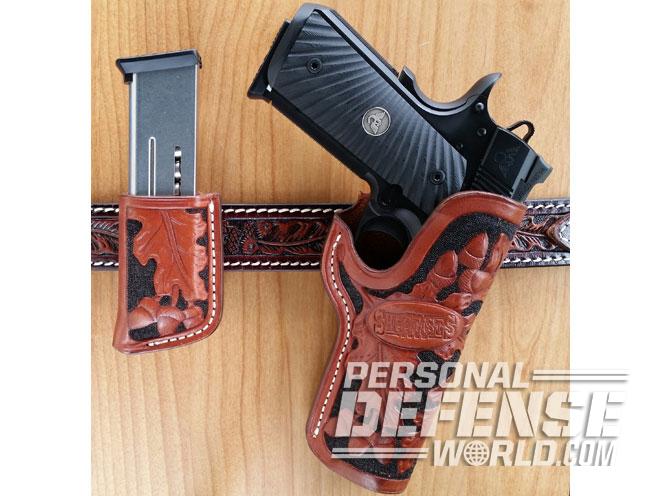
A first-class handgun deserves first-class leather and some of the finest rigs I’ve seen come from the Barranti Leather Co. and are made one at a time by Mike “Doc” Barranti. Mike uses only top-quality leather and produces holsters, magazine pouches, belts, slings and other such gear. I’ve known Mike for a couple of years and he knows what he’s doing, having been in this business since 1986. I have a Ranger-style belt that I obtained over 33 years ago in my Border Patrol days, and I asked Mike if he could approximate the color and carving on this belt in a holster and magazine pouch.
Advertisement — Continue Reading Below
The holster model I selected was his Border Ranger, which is a faithful reproduction of a rig made and worn by the late Tol Dawson, a retired Texas Ranger and leather-crafter in his own right. This is a high-ride, open-top, hip holster that’s hand-carved and finished with an oak leaf/acorn motif to match my belt. I also asked for a single magazine pouch and got just what I wanted. You couldn’t ask for a nicer outfit!
RELATED STORY: Massad Ayoob Reviews the Beretta/Wilson Combat 92G Brigadier Tactical
Bill Wilson is not one to rest on his laurels and makes not only fine 1911 pistols but ammunition to shoot in them. Under the Wilson Combat Custom Handgun Ammunition label, there are three distinct lines, Pinnacle Ammunition, Bulk Pack Ammunition and WC Remanufactured Ammunition. The Pinnacle ammo comes in 9mm and .45 ACP in both standard-pressure and +P loads, using JHP bullets and brass with the Wilson head stamp. The Bulk Pack cartridges come in 9mm, .38 Super and .45 ACP in lots of 200 and 500 rounds, again using Wilson brass. The Remanufactured Ammunition is produced from domestic components in 9mm and .45 ACP and comes in 400-count lots; it’s intended for target shooting, training and competition.
Advertisement — Continue Reading Below
For my examination, I chose a 9mm +P Pinnacle load with a 124-grain XTP JHP bullet to use in the accuracy testing, and for practical shooting 9mm Bulk Ammunition with a 125-grain HAP bullet. Two other 9mm loads used in the accuracy evaluation were HPR 115-grain JHP cartridges and Winchester Ranger LE Ammunition in 9mm +P with a 124-grain SXT bullet.
I was recently introduced to Omaha Targets, which makes a large variety of targets using both paper and card stock. Its target lines include bullseye and scoring targets, photo threat targets and qualification targets. The heavy-duty card stock targets hold up well in all types of weather and resist rain, snow and wind due to their latex and clay-based coating. They also resist tearing due to bullet holes and staples. For practical shooting, I used one of the company’s Photo Threat targets. I believe that as the WC Tactical Carry is meant for action shooting and lethal-threat scenarios, a realistic humanoid target should be used so the focus of the shooter can be on the center mass of the adversary (after threat determination) and not on scoring rings used on a more competition-oriented target.
Range Report
Advertisement — Continue Reading Below

Now to the range. The first chore was to break out my chronograph and get some velocity readings on the test 9mm ammo. I was shooting from a concrete and steel bench, using a sandbag rest and my point of aim (POA) was 6 o’clock of the blaze orange center aiming circle. I was happy to see that with the three brands of test cartridges, the POA and point of impact (POI) were very well-centered near the middle of the target. Accuracy levels were fairly consistent too, with the averages of three 5-shot groups in the vicinity of 2.5 inches. The best average was 2.4 inches with the Wilson cartridges. My best five-shot group was 2.32 inches with the Winchester Ranger LE loads.
Bill Wilson is one of the founders of the International Defensive Pistol Assocation (IDPA), and back in March I was at his East Texas ranch shooting a number of his 1911 pistols, and we did a whole lot of IDPA-type shooting drills and courses. One of the drills was the Wilson 5×5 Skill Test, which was created to provide a measurable, low-round-count skill drill that tests rapid-fire pistol control. I did make a couple of minor modifications to the 5×5 Skill Test. An Omaha #8 Photo Threat target was placed at 10 yards and three Elite Tactical magazines were loaded, one with five rounds and the other two with 10 rounds each. After putting on my Barranti Leather holster and magazine pouch, I was ready.
The course begins with the shooter’s hands at their side and facing the target. I used a Pact timer, and when the buzzer went off, I drew and fired five shots from a modified Weaver stance, reloaded and then re-holstered. I immediately drew and fired five more shots using only my strong hand and reholstered. Drawing the pistol once more, I shot five times, reloaded and shot five more times, then reholstered. Drawing one last time, I fired three shots to the center mass of the target and two shots to the head. Per Wilson’s scoring system, I ranked as an Expert, which is 25 seconds or less, with my misses costing me four seconds.
The Takeaway
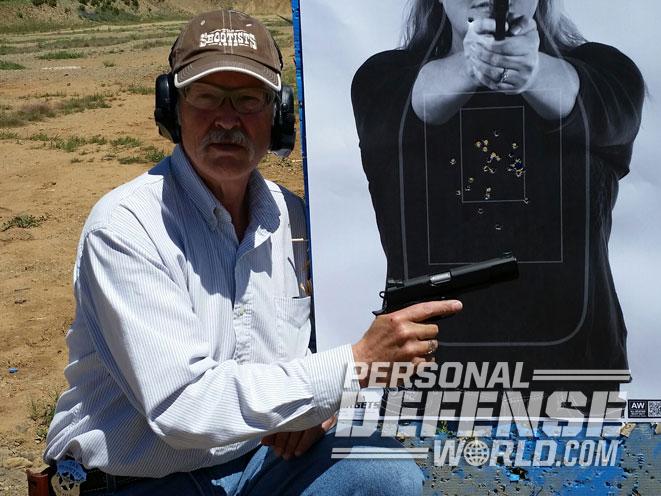
The Tactical Carry 1911 pistol, magazines and leather gear all worked flawlessly. Getting a good grip on the gun in the holster and drawing, I was able to wipe off the safety and engage the target quickly; the green fiber-optic sight made alignment a snap. The G10 Starburst grips and the fine checkering on the front and rear of the grip frame really helped with rapid-fire controllability, along with the weight of this full-sized pistol. The magazine release was easy to find by feel and positive in action, with empty magazines dropping freely. And that wide mag well is just the thing for trouble-free magazine insertions.
The open-top design of the Barranti Border Ranger holster was perfect for speedy reholstering and presentations, plus I liked the low-cut magazine pouch, which held firmly but made grabbing a fresh magazine effortless. The Omaha target worked very well too. I noted that on the head shots I must have been concentrating more on the handgun that the aggressor was holding, as my shots were very near it, a situation that actually mirrors real-life, lethal-force incidents.
RELATED STORY: Hog Wild – Wilson Combat-Style Hog Hunting
I went over to a steel target range next and did some plinking at 50-yard targets using a barricade-style rest position or shooting off-hand using the modified Weaver stance. When I did my part, the targets fell. During a day of test firing around 150 rounds of ammunition, I didn’t record a single malfunction.
The 9mm is returning to the forefront for law enforcement and defensive handgun use. For those who are committed to training and will practice to build the muscle memory and the skills needed to use a 1911-type pistol, then Wilson Combat’s Tactical Carry pistol might just right for you.
FOR MORE INFORMATION
Wilson Combat
http://www.wilsoncombat.com; 800-955-4856
Barranti Leather Co.
http://www.barrantileather.com
Omaha Targets
http://www.omahatargets.com; 844-369-7400
